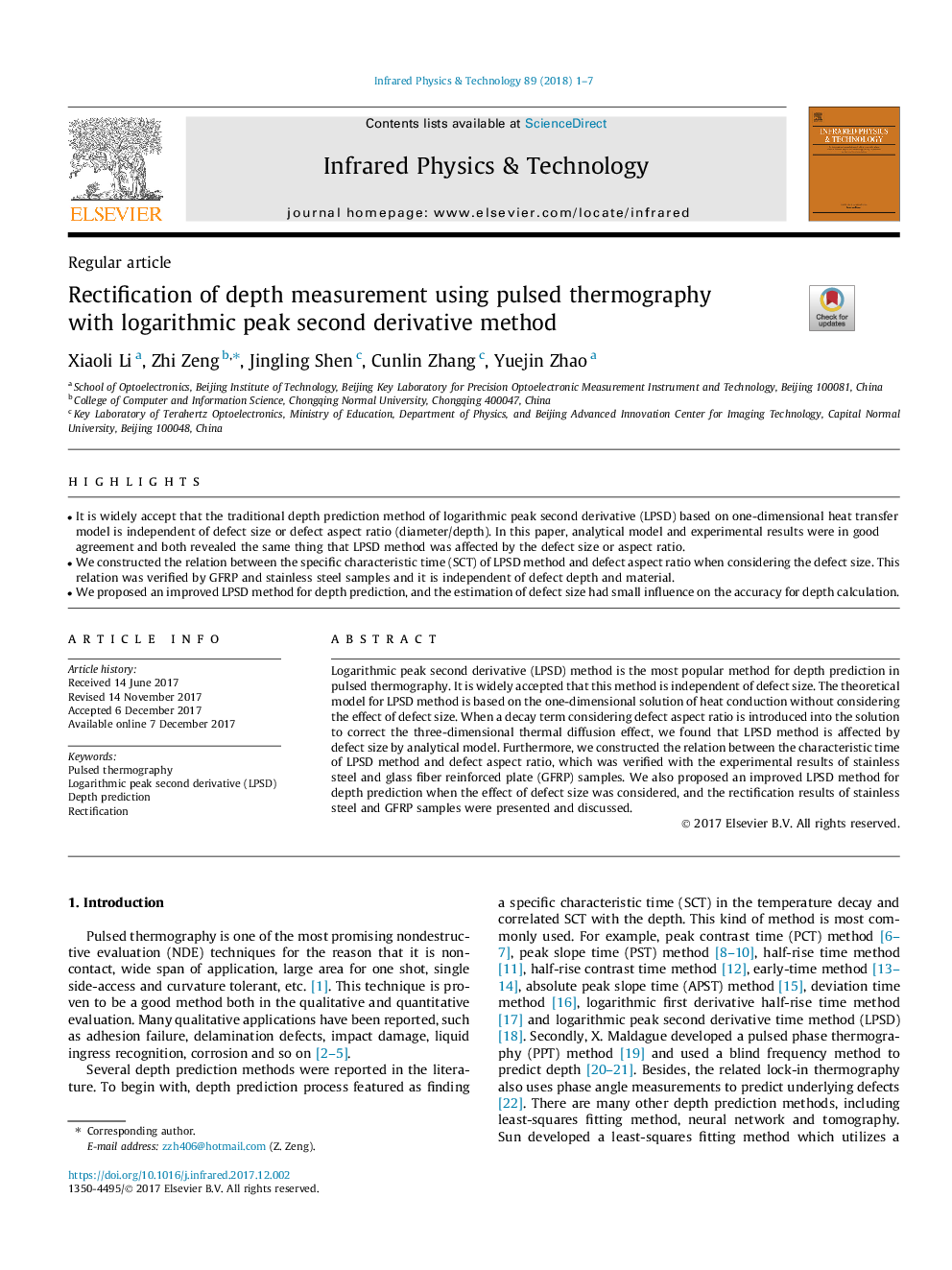| Article ID | Journal | Published Year | Pages | File Type |
|---|---|---|---|---|
| 8145798 | Infrared Physics & Technology | 2018 | 7 Pages |
Abstract
Logarithmic peak second derivative (LPSD) method is the most popular method for depth prediction in pulsed thermography. It is widely accepted that this method is independent of defect size. The theoretical model for LPSD method is based on the one-dimensional solution of heat conduction without considering the effect of defect size. When a decay term considering defect aspect ratio is introduced into the solution to correct the three-dimensional thermal diffusion effect, we found that LPSD method is affected by defect size by analytical model. Furthermore, we constructed the relation between the characteristic time of LPSD method and defect aspect ratio, which was verified with the experimental results of stainless steel and glass fiber reinforced plate (GFRP) samples. We also proposed an improved LPSD method for depth prediction when the effect of defect size was considered, and the rectification results of stainless steel and GFRP samples were presented and discussed.
Keywords
Related Topics
Physical Sciences and Engineering
Physics and Astronomy
Atomic and Molecular Physics, and Optics
Authors
Xiaoli Li, Zhi Zeng, Jingling Shen, Cunlin Zhang, Yuejin Zhao,
